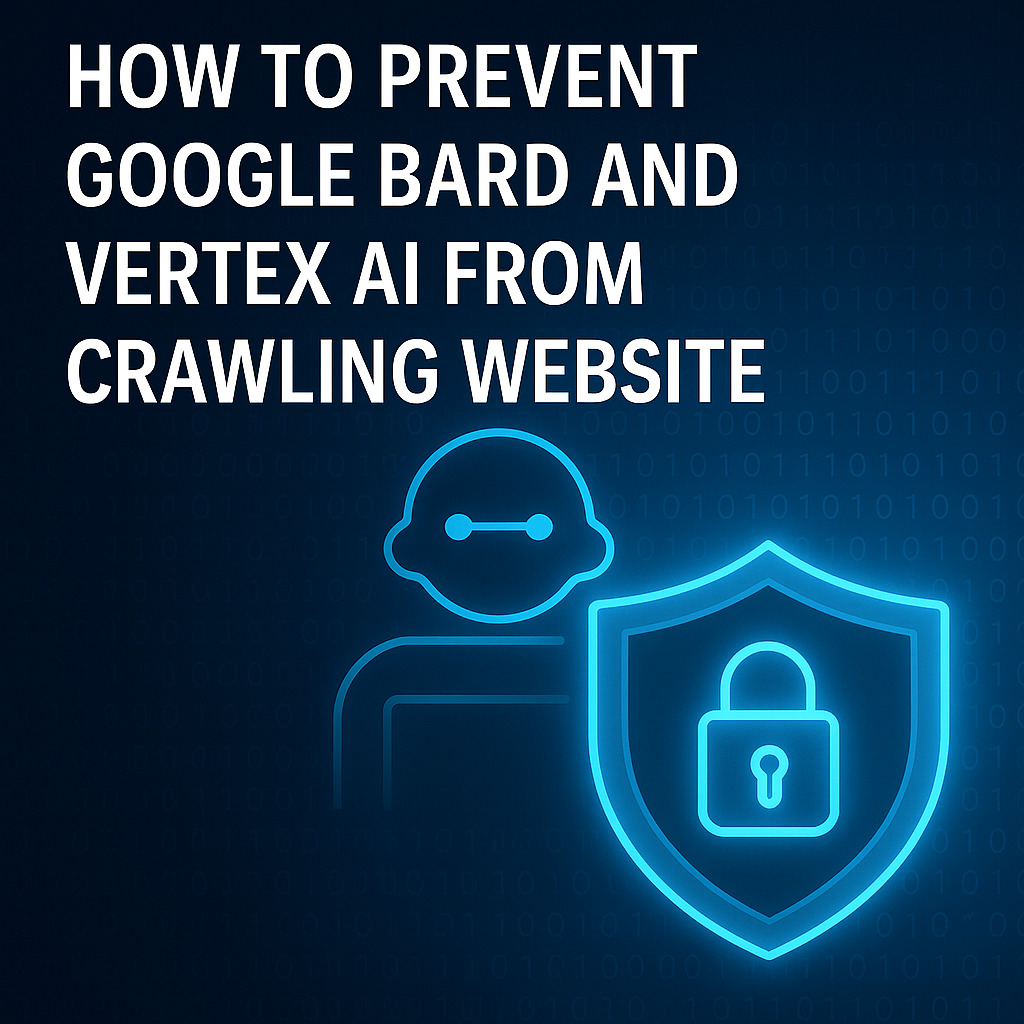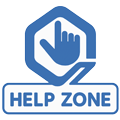⏲️ Estimated reading time: 7 min
How to Prevent Google Bard and Vertex AI from Crawling Website. If you want to stop Google Bard and Vertex AI from crawling your website, you need the right strategies. Learn how to block AI crawlers using robots.txt, HTTP headers, firewall rules, and other methods. Here’s the complete step-by-step guide.
Artificial Intelligence (AI) has transformed how people interact with the internet. Tools such as Google Bard and Vertex AI can generate responses, analyze web data, and provide answers in real time. While this is helpful for users, many website owners worry about AI models crawling their websites without permission.
Some site owners want to protect intellectual property, sensitive information, or monetizable content from being scraped or used for AI training. Others are concerned about SEO performance, server load, and data security.
In this post, we will explore in detail how to prevent Google Bard and Vertex AI from crawling your website using multiple approaches from technical solutions like robots.txt and HTTP headers to advanced methods such as firewall rules and access restrictions.
Why Stop Google Bard and Vertex AI from Crawling?
Before we dive into technical steps, let’s understand why you might want to block AI crawlers.
1. Content Ownership and Copyright
Your website content blog posts, images, product descriptions, and guides may represent original intellectual property. Allowing AI crawlers to freely extract it could mean your work is reused in AI responses without credit or compensation.
2. SEO and Duplicate Content Risks
If AI systems train on your website’s material and reproduce it elsewhere, you may face duplicate content issues or reduced visibility in search engines. Although Google says Bard won’t directly harm SEO, the risk still exists.
3. Server Resource Protection
Automated crawlers can create server strain, especially on smaller hosting plans or VPS servers. If Bard or Vertex AI crawls your site frequently, you could face slower load times or even downtime.

4. Privacy and Security Concerns
If your site hosts sensitive user data, research papers, or client materials, you may not want them indexed or processed by AI.
5. Monetization Strategy
If your site generates revenue through ads, subscriptions, or paywalls, giving away content to AI models could undermine your business model.
How Do Google Bard and Vertex AI Crawl Websites?
Google Bard and Vertex AI rely on Google’s web crawling infrastructure to access content.
- Bard: Uses Google’s Knowledge Graph, Google Search index, and AI models. It pulls information from publicly accessible websites.
- Vertex AI: Primarily a machine learning platform, but may leverage Google Cloud crawlers and dataset integrations.
Both can access web content if it is not blocked by robots.txt or other restrictions.
Methods to Prevent Google Bard and Vertex AI Crawling
Here are the most effective ways to restrict Bard and Vertex AI from crawling your website.
1. Block via Robots.txt
The robots.txt file is the standard way to tell crawlers which areas of your site they cannot access.
Example:
User-agent: Google-Extended
Disallow: /
User-agent: GoogleOther
Disallow: /
User-agent: Bard
Disallow: /
User-agent: VertexAI
Disallow: /
Google-Extendedis a specific crawler Google provides for AI training.GoogleOtheris used by Bard and experimental services.- Adding these lines tells Bard and Vertex AI not to use your site content.
⚠️ Important: Robots.txt is a voluntary standard. Ethical crawlers like Google respect it, but malicious bots may ignore it.
2. Use Meta Tags (NoAI and NoIndex)
You can insert meta tags in your HTML <head> section to stop AI crawlers:
<meta name="robots" content="noai, noimageai">
<meta name="googlebot" content="noindex, noai">
noaiprevents AI from using your content.noindexstops your page from being indexed.- Works at the page level, giving more granular control.
3. HTTP Header Restrictions
If you prefer server-level control, add headers to block AI access.
Example for Apache (.htaccess):
<IfModule mod_headers.c>
Header set X-Robots-Tag "noai, noindex, noimageai"
</IfModule>
For NGINX:
add_header X-Robots-Tag "noai, noindex, noimageai";
These headers apply to all pages, ensuring AI systems are instructed not to crawl or use content.
4. Firewall and Server Rules
To take things further, you can configure firewall rules or security plugins to block AI-related crawlers.
Example using .htaccess:
RewriteEngine On
RewriteCond %{HTTP_USER_AGENT} Google-Extended [NC,OR]
RewriteCond %{HTTP_USER_AGENT} GoogleOther [NC,OR]
RewriteCond %{HTTP_USER_AGENT} Bard [NC,OR]
RewriteCond %{HTTP_USER_AGENT} VertexAI [NC]
RewriteRule .* - [F,L]
This will return a 403 Forbidden error to requests from AI crawlers.
If using Cloudflare, you can create a firewall rule:
- Field: User Agent
- Contains:
Google-Extended,GoogleOther,Bard,VertexAI - Action: Block or Challenge

5. WordPress Plugin Solutions
For WordPress websites, you can use security plugins to simplify blocking.
- All In One WP Security & Firewall → Block crawlers by User-Agent.
- Wordfence → Create custom rules for suspicious bots.
- Custom Plugins → Add code to
functions.phpto deny AI crawlers.
Example:
function block_ai_crawlers() {
$blocked_bots = ['Google-Extended', 'GoogleOther', 'Bard', 'VertexAI'];
$user_agent = $_SERVER['HTTP_USER_AGENT'] ?? '';
foreach ($blocked_bots as $bot) {
if (stripos($user_agent, $bot) !== false) {
wp_die('Access Denied: AI Crawlers Not Allowed');
}
}
}
add_action('init', 'block_ai_crawlers');
6. Password-Protect or Restrict Content
If you have premium content, protect it with:
- Membership plugins (Restrict Content Pro, MemberPress).
- Password protection for specific pages.
- Paywall systems that prevent crawlers from viewing content.
7. API and Dataset Opt-Out
Google allows publishers to opt out of AI training datasets:
- Google Extended Opt-Out Documentation
- Update your robots.txt with:
User-agent: Google-Extended
Disallow: /
This ensures your site content is excluded from Bard training.
Pros and Cons of Blocking Bard and Vertex AI
✅ Advantages
- Protects intellectual property
- Prevents AI from replicating your work
- Reduces server load
- Enhances privacy and security
❌ Disadvantages
- May reduce visibility in AI-driven search results
- Could limit organic traffic from Bard integrations
- Requires ongoing monitoring of crawler updates
- Not 100% foolproof (bad bots may still scrape)
Best Practices
- Combine multiple methods (robots.txt + headers + firewall).
- Monitor server logs to detect Bard or Vertex AI crawls.
- Keep robots.txt updated with new AI crawlers.
- Balance SEO vs. Privacy: Blocking Bard may affect traffic.
- Decide case by case: Block premium content but allow general posts.
Example Robots.txt for Maximum Protection
Here’s a full version you can adapt:
# Block Google AI Crawlers
User-agent: Google-Extended
Disallow: /
User-agent: GoogleOther
Disallow: /
# Block Bard AI
User-agent: Bard
Disallow: /
# Block Vertex AI
User-agent: VertexAI
Disallow: /
# Allow Google Search indexing
User-agent: Googlebot
Allow: /
This ensures Google Search still indexes your site, but AI crawlers are restricted.
Future of AI Crawling and Content Protection
As AI models become more powerful, website owners will need stronger protections. Some expect new web standards like “NoAI” meta directives to be universally enforced.
Others believe in content licensing models, where site owners are compensated if their content is used in AI training.
For now, using robots.txt, headers, and firewalls is the best way to control access.
Final Thoughts
Stopping Google Bard and Vertex AI from crawling your website is not just about technology, but also about strategy. You need to decide what content you want indexed, shared, or protected.
If your goal is to maximize exposure, you might allow Bard access. But if your priority is privacy, control, and monetization, then blocking AI crawlers is a smart choice.
By following the steps in this guide from robots.txt rules to firewall protections you can take control of your content’s future in the age of artificial intelligence.
🔔 For more tutorials like this, consider subscribing to our blog.
📩 Do you have questions or suggestions? Leave a comment or contact us!
🏷️ Tags: Google Bard, Vertex AI, block crawlers, robots.txt, WordPress security, AI content scraping, server protection, SEO privacy, AI blocking plugin, firewall rules
📢 Hashtags: #GoogleBard #VertexAI #RobotsTxt #AICrawlers #WordPressSecurity #SEO #PrivacyProtection #ContentOwnership #AItraining #Firewall
🔒 In a world increasingly driven by artificial intelligence, the power to protect your website rests in your hands. By taking proactive steps combining robots.txt, headers, plugins, and firewalls you can prevent unwanted AI crawling while still maintaining visibility in traditional search.
Your content is your digital asset. Protect it wisely.
Only logged-in users can submit reports.
Discover more from HelpZone
Subscribe to get the latest posts sent to your email.

